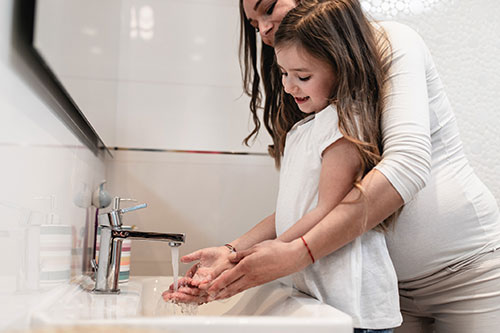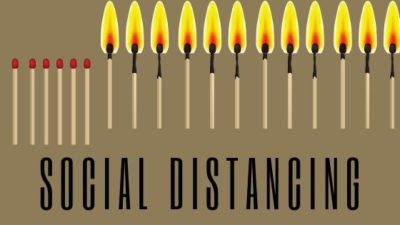Colorado COVID-19 Modeling Data Shows Need for Caution as Social Distancing Stats Decline
In case we weren’t all freaked out enough, now the public health experts have given us another sobering warning. Scientific models for Colorado predict a surge of the coronavirus known as COVID-19. Depending upon our behavior it could be delayed and manageable, perhaps pushed into fall, or it could take us off the case charts and overwhelm the Colorado health care system.
Experts at the Colorado Department of Public Health and Environment (CDPHE) and the Colorado School of Public Health have put together modeling data for the remainder of 2020. Check out the report HERE.
Colorado’s COVID-19 Prevention Goals:
- Slow down the spread of the virus so we don’t exceed hospital capacity and run out of hospital beds/ventilators.
- Get kids back to school in the fall.
- Prevent having to return to “Stay-at-Home”.
According to the modeling experts, which included the head of the CDPHE Jill Ryan, public health experts from the University of Colorado and the state epidemiologist, “The ONLY way to do this is to continue with limited social interactions, wearing masks, and staying six feet apart from others in public. Recent data shows that though the rate of infection and hospitalization is declining, the rate of decline has slowed down as we have begun leaving our homes.”
In fact, the data shows that time at home has been decreasing since April and that social distancing rates are not a monolith. Social distancing is influenced by age, whether people live in metro or rural areas, and occupation. The protest movements that have sprung up nationwide, including in Colorado in places from Denver to Vail to Salida, are likely to have an impact on infections.
Following social distancing guidelines, wearing face masks, and implementing contact tracing are considered critical for the state to stay under a factor of 1. If we do not, say the experts, the rates of COVID increases will rise quicker.
Under the state’s “Safer-at-Home” modeling, all scenario models assume face masks are worn, 65 percent social distancing rate continues, case detection and isolation are in place, keeping case increases at five percent/week; a modest but shallow rise. But the models show it is entirely dependent upon those social distancing standards being maintained. No matter what, we’ll see a rise in cases by mid-July.
As the percentage of people following social distancing guidelines drops, cases will build. At 55 percent social distancing, we’ll see the surge around Sept. 23.
Relaxation of social distancing to levels to 45 percent or below is predicted to lead to a surge in COVID-19 cases that is in excess of our medical system’s capacity to handle; it will rise sooner, more steeply, and higher by around the third week of July. The peak will likely be larger than it was in April.
The model averages get better when those over age 60 maintain high social distancing and stay at home; which would seem an unfair burden to put on our older population, if the other demographics don’t play their part. The models ask older adults and those with medical conditions to reduce their social interactions by 80 percent.
Key findings:
- Estimates are that 2.9 percent of the Colorado population has been infected, whether they know it or not; meaning there are an unknown number of virus carriers in society now.
- Colorado will have to be at high levels of social distancing — 60-65 percent, along with mask-wearing, and increases in case detection and isolation, to avoid exceeding our hospital capacity.
- Relaxing to 45 percent social distancing is predicted to lead to a surge in sick patients by mid-summer, even if all the health practices are followed (if health practices aren’t followed the surge will be even higher)
- It is critical that older adults continuing to maintain a high level of social distancing.
- All models find that increased mask-wearing will be beneficial to the control of the COVID-19 virus.
- At low levels of social distancing (45 percent) we exceed hospital capacity by mid-summer, even IF older adults maintain high levels of social distancing.
- Around mid-August, the date by which schools generally open, the epidemic curve under ALL COVID-19 model scenarios is rising.
- In most scenarios — even the best ones — the modeling groups says that it expects the next peak to be higher than the April peak.
According to the experts, “The more the virus is circulating, the harder it will be and the longer it will take to get back to ‘normal’.”
Recommendations from the model group:
- Get tested
- Wear a face mask. In fact, the experts say that statistics confirm it: “Masks can decrease transmission, hospitalizations, and ICU admissions.”
- Practice social distancing.
While a segment of the population insists upon seeing the COVID-19 threat as a threat to older Coloradans, this is not true; 50 percent of the hospitalizations have been people under the age of 50. There are new risks to children, including the multi-system inflammatory syndrome.










Thank you Jan for the information in the article. I really appreciate your reporting.